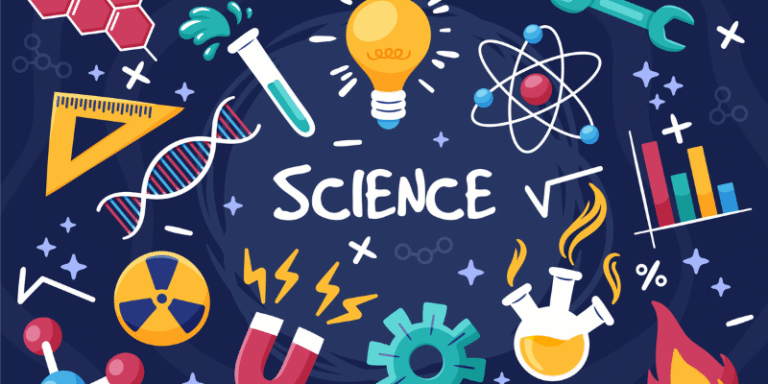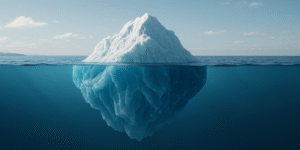Science is not merely a collection of facts or a static body of knowledge—it is a dynamic, evolving method of understanding the world around us. Through observation, experimentation, and analysis, science helps us explain natural phenomena, develop technology, and make informed decisions in everyday life. Broadly, science is categorised into APPLIED SCIENCE, which uses that knowledge to solve practical problems and NATURAL SCIENCE, which focuses on understanding natural phenomena. Within natural sciences, PHYSICAL SCIENCE and LIFE SCIENCE are two of the most foundational branches.
1.0 Applied Science: Solving Real-World Problems
Applied science refers to the use of scientific principles to develop practical solutions. Unlike pure or basic science, which seeks to understand the underlying laws of nature, applied science translates these discoveries into innovations that improve human life.
1.1 Mathematics
Mathematics serves as the universal language of science. It underpins nearly every scientific discipline by providing tools for modelling phenomena, analysing data, and solving quantitative problems. In applied science, mathematics is crucial for fields such as engineering and economics (Stewart, 2015).
1.2 Engineering
Engineering combines scientific knowledge with creativity to design, build, and maintain machines, systems, and structures. From bridges and aircraft to computer systems and biomedical devices, engineering transforms theory into tangible products (Beer et al., 2018).
1.3 Medical and Health Sciences
Medical sciences apply biological and chemical knowledge to understand the human body and combat disease. Innovations such as vaccines, MRI machines, and surgical robots are products of applied biological and chemical principles (Tortora & Derrickson, 2017).
1.4 Environmental Science
This interdisciplinary field applies knowledge from physics, chemistry, and biology to address environmental issues such as pollution, climate change, and biodiversity loss. Solutions like renewable energy and waste management practices stem from applied environmental science (Cunningham & Cunningham, 2016).
1.5 Computer Science
Although often considered part of applied science, computer science also heavily relies on physical science principles such as logic and mathematics. It enables the development of software, algorithms, and computing technologies that power modern life (Brookshear & Brylow, 2019).
2.0 Natural Science
2.1 Physical Science: Exploring Non-Living Systems
Physical science focuses on the laws and properties that govern non-living matter and energy. It includes four major disciplines: Physics, Chemistry, Astronomy, and Geology. These fields help answer profound questions about the universe and the nature of reality.
2.1.1 Physics
Physics studies the fundamental forces and constituents of the universe. It explores phenomena from the subatomic level to the cosmos, answering questions such as how gravity works and what constitutes matter and energy (Giancoli, 2014).
2.1.2 Chemistry
Chemistry examines the composition, structure, and properties of matter. It explains how substances interact, change, and combine to form new substances. From pharmaceuticals to food production, chemistry plays a vital role in everyday life (Zumdahl & Zumdahl, 2016).
2.1.3 Astronomy
Astronomy is the study of celestial objects like stars, planets, and galaxies. It provides insights into the origins of the universe, the nature of time and space, and the possibility of life beyond Earth (Bennett et al., 2017).
2.1.4 Geology
Geology investigates Earth’s physical structure and processes. This includes studying rocks, earthquakes, volcanoes, and natural resources. Geology is vital for understanding natural hazards and sustainable resource management (Marshak, 2018).
2.2 Life Science: Understanding Living Systems
Life science, also known as biological science or Biology (Campbell et al., 2020), investigates into the complexity of living organisms and ecosystems. It covers diverse fields such as biology, botany, zoology, microbiology, and ecology.
2.2.1 Botany
Botany focuses on plant life. It explores plant physiology, genetics, and ecology. Understanding plants is crucial not only for agriculture and food security but also for medicine and environmental conservation (Raven et al., 2012).
2.2.2 Zoology
Zoology examines the animal kingdom, covering aspects such as anatomy, physiology, behaviour, and evolution. It is central to fields like wildlife conservation and veterinary science (Kardong, 2015).
2.2.3 Microbiology
Microbiology studies microscopic organisms like bacteria, viruses, and fungi. It plays a key role in medicine, biotechnology, and food safety by helping us understand and control pathogens (Prescott et al., 2020).
2.2.4 Ecology
Ecology investigates how organisms interact with each other and their environments. It provides insights into biodiversity, ecosystems, and the impact of human activity on the planet (Molles, 2016).
Science as a Unified Endeavour
Despite being divided into distinct fields, the branches of science are deeply interconnected. Physical sciences provide the foundational laws that underpin both life and applied sciences. In turn, applied sciences take these principles and direct them toward real-world applications that improve our quality of life.
- For example, combating climate change involves:
- Understanding atmospheric physics (physical science),
- Studying plant responses to changing temperatures (life science),
- Developing renewable energy systems (applied science).
The scientific method—observation, hypothesis, experimentation, and conclusion—binds all these branches. It ensures that discoveries are based on empirical evidence, reproducibility, and logical reasoning.
Science shapes our understanding of the universe and empowers us to address global challenges. By exploring the physical laws of matter, the complexities of living organisms, and translating this knowledge into innovation, science remains humanity’s most powerful tool. Whether it’s through designing sustainable energy systems, discovering life-saving drugs, or unravelling the mysteries of the cosmos, science continues to redefine the boundaries of possibility.
References
Beer, F. P., Johnston, E. R., DeWolf, J. T. & Mazurek, D. F. (2018). Mechanics of Materials. 8th ed. New York: McGraw-Hill Education.
Bennett, J., Donahue, M., Schneider, N. & Voit, M. (2017). The Cosmic Perspective. 8th ed. Boston: Pearson.
Brookshear, J. G. & Brylow, D. (2019). Computer Science: An Overview. 13th ed. Boston: Pearson.
Campbell, N. A., Urry, L. A., Cain, M. L., Wasserman, S. A., Minorsky, P. V. & Reece, J. B. (2020). Biology. 12th ed. Boston: Pearson.
Cunningham, W. P. & Cunningham, M. A. (2016). Environmental Science: A Global Concern. 14th ed. New York: McGraw-Hill Education.
Giancoli, D. C. (2014). Physics: Principles with Applications. 7th ed. Boston: Pearson.
Kardong, K. V. (2015). Vertebrates: Comparative Anatomy, Function, Evolution. 7th ed. New York: McGraw-Hill Education.
Marshak, S. (2018). Essentials of Geology. 13th ed. New York: W.W. Norton & Company.
Molles, M. C. (2016). Ecology: Concepts and Applications. 7th ed. New York: McGraw-Hill Education.
Prescott, L. M., Harley, J. P. & Klein, D. A. (2020). Microbiology. 11th ed. New York: McGraw-Hill Education.
Raven, P. H., Evert, R. F. & Eichhorn, S. E. (2012). Biology of Plants. 8th ed. New York: W.H. Freeman and Company.
Stewart, J. (2015). Calculus: Early Transcendentals. 8th ed. Boston: Cengage Learning.
Tortora, G. J. & Derrickson, B. H. (2017). Principles of Anatomy and Physiology. 15th ed. Hoboken, NJ: Wiley.
Zumdahl, S. S. & Zumdahl, S. A. (2016). Chemistry: An Atoms First Approach. 2nd ed. Boston: Cengage Learning.









